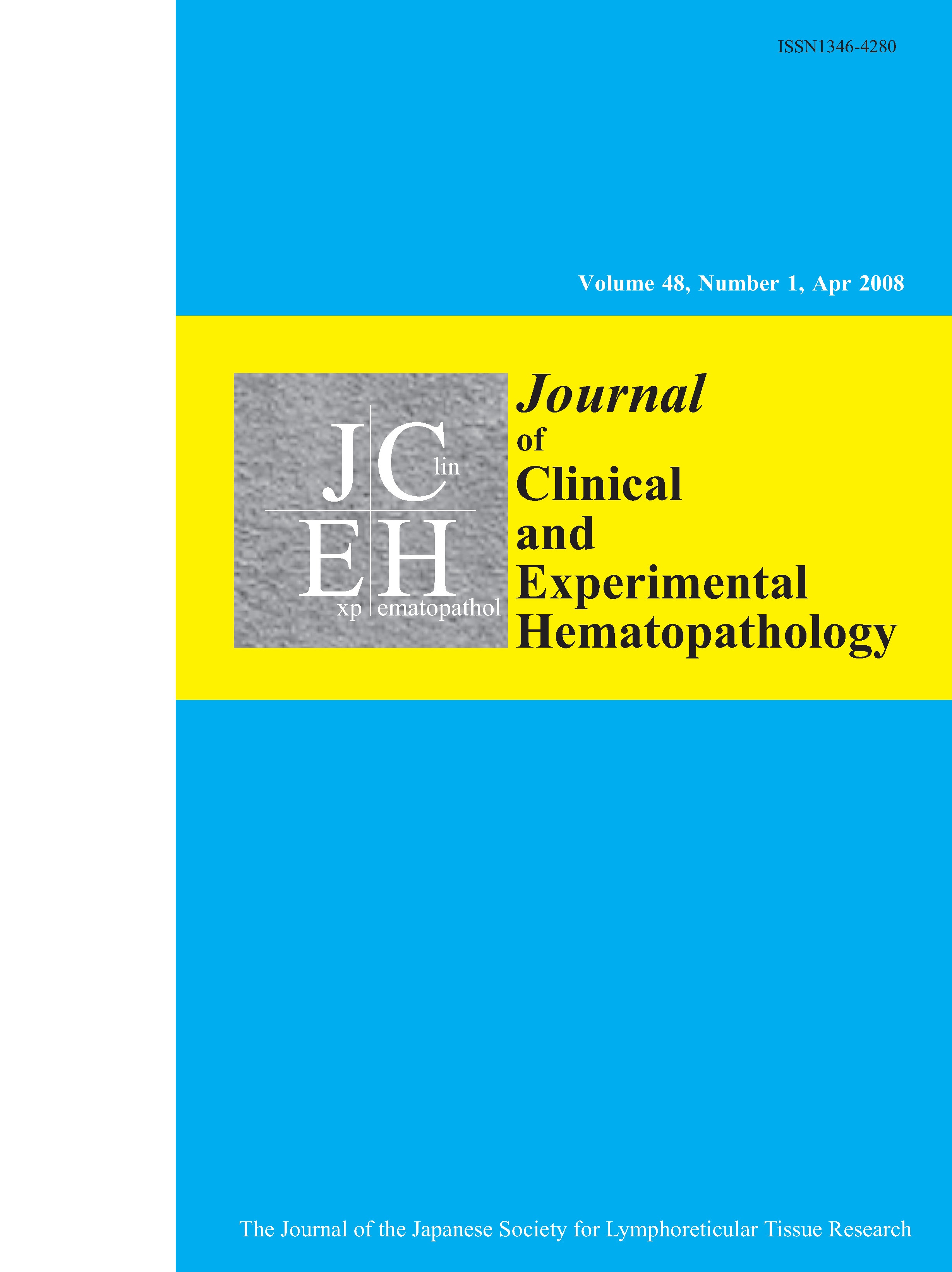63 巻, 4 号
選択された号の論文の11件中1~11を表示しています
- |<
- <
- 1
- >
- >|
Commentary
-
2023 年 63 巻 4 号 p. 212-213
発行日: 2023/12/26
公開日: 2023/12/26
PDF形式でダウンロード (282K)
Original Article
-
2023 年 63 巻 4 号 p. 214-218
発行日: 2023/12/26
公開日: 2023/12/26
PDF形式でダウンロード (695K) -
2023 年 63 巻 4 号 p. 219-229
発行日: 2023/12/26
公開日: 2023/12/26
PDF形式でダウンロード (1015K) -
2023 年 63 巻 4 号 p. 230-239
発行日: 2023/12/26
公開日: 2023/12/26
PDF形式でダウンロード (649K)
Case report
-
2023 年 63 巻 4 号 p. 240-245
発行日: 2023年
公開日: 2023/12/26
[早期公開] 公開日: 2023/10/28PDF形式でダウンロード (1571K) -
2023 年 63 巻 4 号 p. 246-250
発行日: 2023/12/26
公開日: 2023/12/26
PDF形式でダウンロード (766K) -
2023 年 63 巻 4 号 p. 251-256
発行日: 2023/11/26
公開日: 2023/12/26
PDF形式でダウンロード (1638K) -
Coincidence of de novo T-lymphoblastic lymphoma and cutaneous gamma/delta peripheral T-cell lymphoma2023 年 63 巻 4 号 p. 257-261
発行日: 2023/12/26
公開日: 2023/12/26
PDF形式でダウンロード (1794K)
Short Communication
-
2023 年 63 巻 4 号 p. 262-265
発行日: 2023/12/26
公開日: 2023/12/26
PDF形式でダウンロード (380K)
Letter to the Editor
-
2023 年 63 巻 4 号 p. 266-269
発行日: 2023年
公開日: 2023/12/26
[早期公開] 公開日: 2023/11/30PDF形式でダウンロード (733K) -
2023 年 63 巻 4 号 p. 270-274
発行日: 2023年
公開日: 2023/12/26
[早期公開] 公開日: 2023/10/28PDF形式でダウンロード (1259K)
- |<
- <
- 1
- >
- >|
